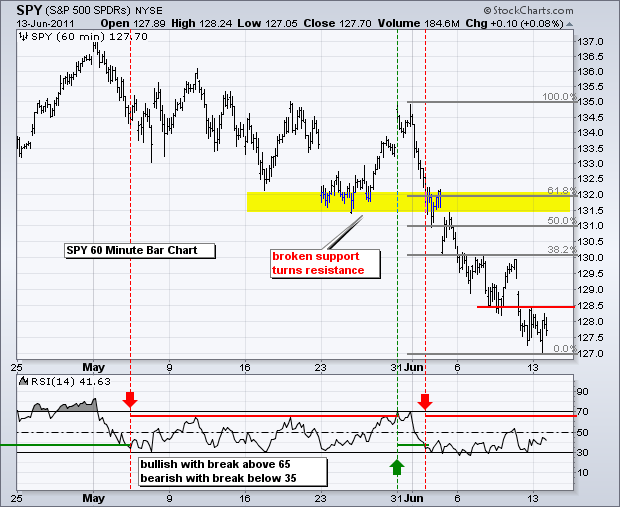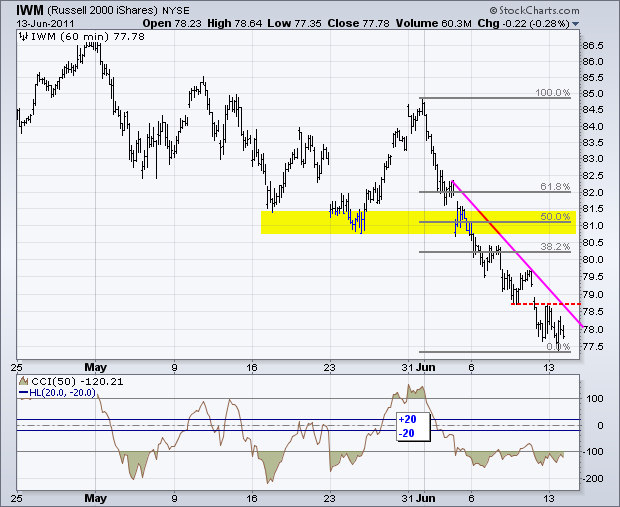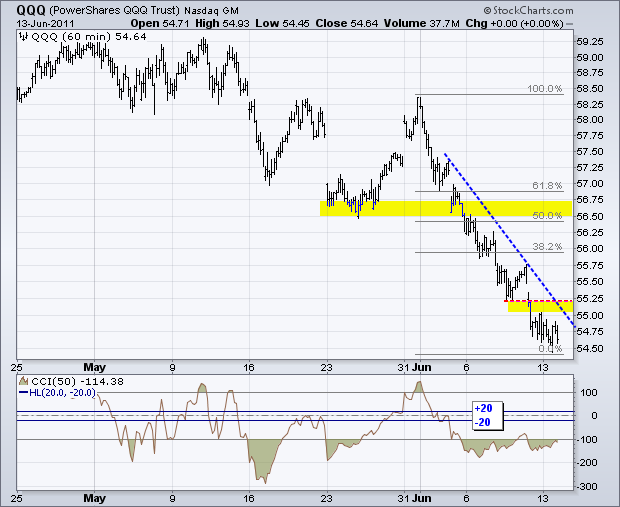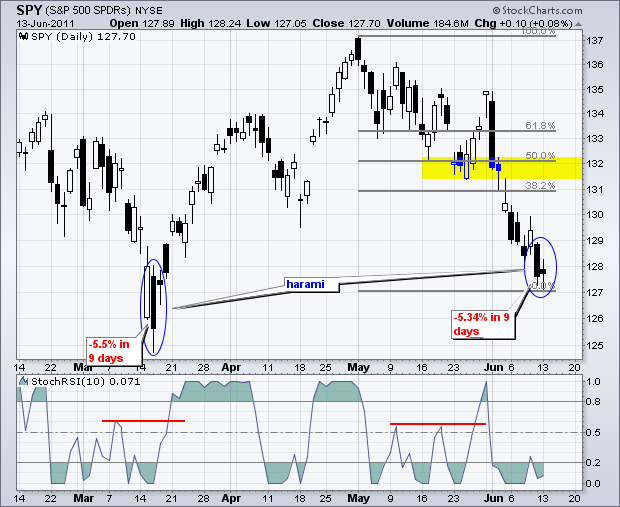The S&P 500 ETF (SPY) remains oversold, but unable to sustain a bounce. Last week's bounce attempts failed as the ETF moved to new lows on Friday. SPY did manage to firm on Monday with a spinning top. Also notice that the body of the spinning top is within the prior candlestick's body. This means a Harami formed over the last two days. According to Steve Nison, the color of the second candlestick can be white or black. The important thing is that the body of the second is within the body of the first. The first candlestick (long black) reinforces the strength of the current downtrend. The second candlestick shows indecision by suddenly firming after this strong move lower. Harami are potentially bullish reversal patterns that require confirmation with a short-term breakout.



Key Economic Reports/Events:
Tue - Jun 14 - 08:30 - Retail Sales
Tue - Jun 14 - 08:30 - Producer Price Index (PPI)
Tue - Jun 14 - 10:00 - Business Inventories
Wed - Jun 15 - 08:30 - Consumer Price Index (CPI)
Wed - Jun 15 - 08:30 - Empire State Manufacturing
Wed - Jun 15 - 09:15 - Industrial Production
Wed - Jun 15 - 10:00 - NAHB Housing Market Index
Wed - Jun 15 - 10:30 - Oil Inventories
Thu - Jun 16 - 08:30 - Jobless Claims
Thu - Jun 16 - 08:30 - Housing Starts/Building Permits
Thu - Jun 16 - 10:00 - Philadelphia Fed
Fri - Jun 17 - 09:55 - Michigan Sentiment
Fri - Jun 17 - 10:00 - Leading Indicators
Charts of Interest: Tuesday and Thursday in separate post.
This commentary and charts-of-interest are designed to stimulate thinking. This analysis is not a recommendation to buy, sell, hold or sell short any security (stock ETF or otherwise). We all need to think for ourselves when it comes to trading our own accounts. First, it is the only way to really learn. Second, we are the only ones responsible for our decisions. Think of these charts as food for further analysis. Before making a trade, it is important to have a plan. Plan the trade and trade the plan. Among other things, this includes setting a trigger level, a target area and a stop-loss level. It is also important to plan for three possible price movements: advance, decline or sideways. Have a plan for all three scenarios BEFORE making the trade. Consider possible holding times. And finally, look at overall market conditions and sector/industry performance.







